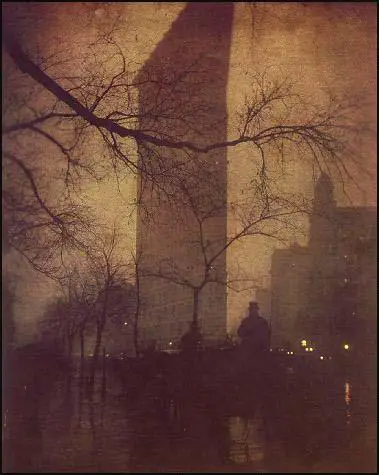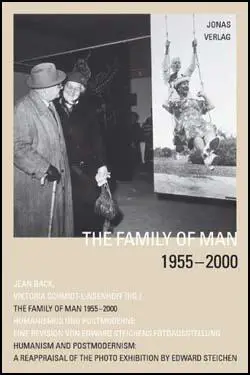Edward Steichen
Edward Steichen was born in Luxembourg on 27th March, 1879. When Edward was three years old his family moved to the United States and eventually settled in Hancock, Michigan
At the age of fifteen Steichen began a lithography apprenticeship with the American Fine Art Company in Milwaukee. He also attended lectures by Richard Lorenz and Robert Schode at Milwaukee's Arts Students League. Steichen took up photography in 1895 but continued to paint for the next twenty years.
In 1899 some of Steichen's photographs were exhibited at the Second Philadelphia Salon. Three of these prints were purchased by the photographer Alfred Stieglitz. The two men became close friends and in 1902 joined with Clarence White, Alvin Langdon Coburn, and Gertrude Kasebier to form the Photosecession Group. Stieglitz also promoted Steichen's work in his journal, Camera Work and his Little Gallery on Fifth Avenue, New York.
Steichen began experimenting with colour photography in 1904 and was one of the first people in the United States to use the Lumiere Autochrome process. He travelled to Europe and collected the work of the best photographers and these were exhibited by Alfred Stieglitz in 1910 at the International Exhibition of Pictorial Photography. Thirty-one of Steichen's photographs also appeared in the exhibition.
In 1913 Alfred Stieglitz devoted a double issue of Camera Work to Steichen's photographs. He wrote in the magazine: "Nothing I have ever done has given me quite so much satisfaction as finally sending this number out into the world."
During the First World War Steichen became commander of the photographic division of the American Expeditionary Forces. This gave him the opportunity to become involved with aerial photography. Shocked by what he witnessed on the Western Front, Steichen denounced impressionistic photography and instead concentrated on realism. He later wrote: "I am no longer concerned with photography as an art form. I believe it is potentially the best medium for explaining man to himself and his fellow man."
After the war Steichen became increasingly involved in commercial photography. He worked for the J. Walter Thompson Advertising Agency and in 1923 became chief photographer for Conde Nast Publications and his work appeared regularly in Vogue and Vanity Fair. He also published portraits of many well-known figures including Carl Sandburg, Charles Chaplin and H. L. Mencken.
In 1945 Steichen became Director of the U.S. Naval Photographic Institute. Steichen was responsible for the publication of the navy's combat photography and during the Second World War organized the Road to Victory and Power in the Pacific exhibitions at the Museum of Modern Art in New York.
After the war Steichen became director of Photography at the Museum of Modern Art. This included the organization in 1955 of what became the most popular exhibition in the history of photography, The Family of Man. In 1964 the Edward Steichen Photography Center was established in the museum. Edward Steichen died in West Redding, Connecticut, on 25th March, 1973.


